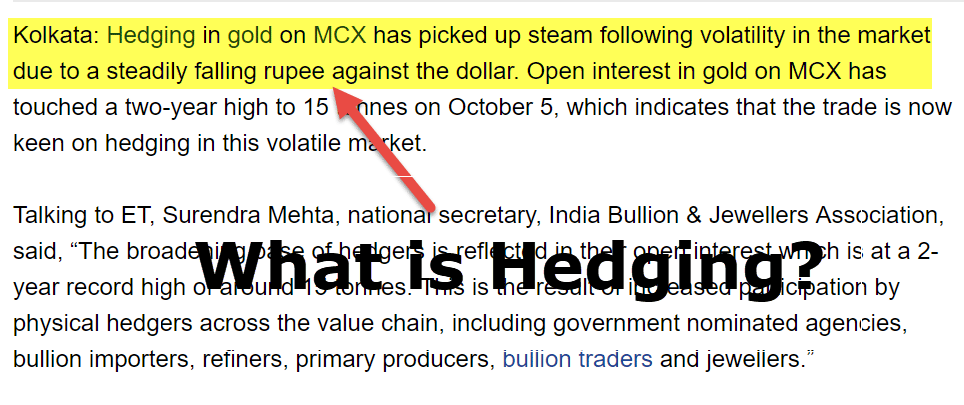

However, we do have an article on estimating total risk and another one on calculating systematic risk. Unsystematic risk, or diversifiable risk, is typically contrasted withsystematic risk. However, the company realizes that consumers would be more inclined toward bigger phones and watches in the next year. Thus, the inventory and machinery obtained by the company later sell at a major loss or remain unsold. Thus, all the other firms in the technology sector might perform well while this company will backtrack due to poor entrepreneurial foresight. To continue to grow and meet its financial obligations, a company must maintain an optimal level of debt and equity.

In terms of trade or sector, an example of idiosyncratic threat for mining firms would be the exhaustion or the inaccessibility of a vein or a seam of steel. Likewise, the potential of a pilots’ or a mechanics’ strike could be an idiosyncratic threat for airline corporations. According to the Property Casualty Insurers Association of America, there are two key assessments for measuring systemic threat, the “too huge to fail” and the “too connected to fail” checks.
#2. Internal Business Risk
The private enterprise has to resolve the matter most of the time as it does not impact the larger section of the economy. Tesla’s operations are centered around several gigantic manufacturing plants that benefit from favorable subventions by local governments. If those municipalities were to change their policies, they would likely damage Tesla’s profits without affecting competitors. What makes it unsystematic is that only a few firms tend to make the same mistake at the same time.

On the other hand, it is not always possible for an investor to learn what is going on behind the scenes of a company in which they have invested. Save taxes with ClearTax by investing in tax saving mutual funds online. Our experts suggest the best funds and you can get high returns by investing directly or through SIP. ClearTax offers taxation & financial solutions to individuals, businesses, organizations & chartered accountants in India.
It is also referred to as “Specific Risk”, “Diversifiable threat” or “Residual Risk”. These are dangers which are current but are unplanned and may happen at any level in inflicting widespread disruption. Once risks are identified, corporations take the appropriate steps to handle them to protect their enterprise property. The most common kinds of danger management methods embody avoidance, mitigation, transfer, and acceptance. A extra useful systemic danger measure than a conventional TBTF take a look at is a “too linked to fail” evaluation. The risk that any individual shareholder would be exposed to is Systematic Risk, no matter whether it’s a diversified investor who owns a large number of stocks or an investor who holds only one stock.
Unsystematic risk, also referred to as diversifiable threat, is the uncertainty related to a person inventory or industry. The shock announcement that Lumber Liquidators had been promoting hardwood flooring with harmful ranges of formaldehyde in 2015 is an example of an unsystematic threat that was specific to that firm. Legal and regulatory risk is the risk that a company doesn’t comply with laws and regulations or the potential change in laws and regulations that negatively affect the business. Since often laws and regulations affect a single firm or industry it is considered an unsystematic risk. For example, a new regulation that doesn’t allow grocery stores to sell processed food over a certain sodium limit goes into effect.
Systematic risk distresses a large number of organizations in the market or an entire industry sector. The herd mentality risk accounts for the majority of market volatility and systematic risk. Sharp market declines can wipe out a significant amount of your profits, whether you invest in individual stocks, exchange-traded funds , bonds, or other securities. Internal business risk impacts single companies rather than industries and stems from the internal affairs and performance of a company. Food, healthcare, and heavy manufacturing are examples of more stable industries and, as a result, organizations with reduced business risks. Similarly, industries and organizations that develop and change quickly might be more unpredictable.
What is Systematic Risk?
Because of the far-reaching scope of systematic risk—wherein the entire economy is placed in a vulnerable position—portfolio diversification cannot mitigate this risk. Investing in mutual funds may provide security, as this will give you small ownership of various financial instruments. Be aware, though, that a mutual fund investment does not always guarantee instant diversification, especially if the fund focuses only on one particular industry sector.
- Instead, it needs to be extrapolated by excluding the systemic risk from the overall risk.
- In distinction, particular danger is threat to which only specific agents or industries are susceptible .
- Systematic risk occurs due to uncontrollable factors such as natural calamities instead of the unsystematic risk, which is due to controllable factors such as the production of undesirable products.
- Strategic risk arises when a corporation finds itself caught selling goods or services in a failing industry without a solid plan to evolve the company’s offerings.
- The reduction in unsystematic risk through diversification can reduce the variability in your portfolio returns.
- Alternatively, explore and get unlimited access to all our rigorous courses for investingto gain a real command of Finance.
This is crucial to minimize the impact of specific threats on their portfolios. At some point, unsystematic risk can lead to a permanent change in the preference of the customers. And if that happens, such risks could have serious repercussions on the market of such a company or industry. The persons involved with the hazards are fewer than the systematic risks, and thus monetary compensation is also less or nil in the case of unsystematic risks.
It is also called market risk or non-diversifiable or volatility risk as it is beyond the control of a specific company or individual, and hence, can’t be diversified. Market risk is the risk of an individual stock or portfolio that cannot be diversified away. It is synonymous with systematic risk and stems from macroeconomic factors that affect all companies. Since market risk affects all companies and can’t be diversified away it is a systematic risk. The Great Recession of 2008 proves to be a key example of systematic risk. People who had invested in all kinds of securities saw the values of their investments fall due to the market-wide economic event.
Systematic and Unsystematic Risk | Differences, Types & Examples
Diversify your portfolio and own stocks and securities in a variety of assets that are less affected by singular events. The origin of these risks can stem from both external and internal factors emerging within a business firm or a company. By diversifying your portfolio, you can minimize its exposure to unsystematic risk. However, it’s important to note that the risk cannot be 100% eliminated. Below, we have provided answers to the most important questions investors have about unsystematic risk. Systematic and unsystematic risk are two important concepts in finance and investing.
#2. Financial risk
While systemic danger is a bit amorphous, systematic threat has a extra common which means. The time period is usually used interchangeably with “market threat” and means the danger that’s baked into the overall market that may’t be resolved by diversifying your portfolio or holdings. Since all fashions aren’t geared in the direction of this situation, all individuals in an illiquid market using such fashions will face systemic risks. The conventional analysis for assessing the chance of required authorities intervention is the “too massive to fail” take a look at . Therefore, one can sum up all the Clayton Copula parameters, and the upper the sum of those parameters, the higher the upcoming likelihood of systemic threat. In distinction, systematic risk cannot be mitigated simply by adding more property to an funding portfolio.
The impact is measure past the institution’s merchandise and activities to incorporate the financial multiplier of all different commercial actions dependent specifically on that establishment. This is ultimately example of unsystematic risk because, under the CAPM, theonly factor that affects expected returns of securities is the overall market portfolio. Now, assuming you know how to estimate total risk and market risk, we can proceed further.
Unsystematic risk is the risks generated in a particular company or industry and may not apply to other industries or economies. Small players with low profitability and high debt are exiting the business. As telecommunication is a capital-intensive sector, it requires enormous funding.
The first refers to the uncertainty in a company’s operations and financial performance. Financial risk refers to the uncertainty of a firm’s financial position, and event risk refers to unexpected events that can significantly impact its operations. Industry-specific risk is inherent in a particular industry, such as the oil and gas industry’s exposure to fluctuations in the price of oil and gas.
The unsystematic risk can be partially controlled with the help of management solutions like diversification and allocation of the assets. The unsystematic risk is dynamic because of the problems that each company or sector faces are unique. It has no correlation with the overall economy, and the scale of the impact is also lower. Therefore, the government usually does not intervene, and private players only need to address the issue at hand. Hence, an investor should opt for portfolio diversification to avoid deep shocks. Even if the entire economy is going fine, a series of unsystematic risks can act as a hazard to a particular industry or the business.
Much of the existing inventory for the aforementioned technology company either goes unsold or sells at a major loss. Operational risk is tied to operations and the potential for failed systems or policies. Operational riskscan result from unforeseen or negligent events, such as a breakdown in the supply chain or a critical error being overlooked in the manufacturing process. A security breach could expose confidential information about customers or other types of key proprietary data to criminals. Like, if workers of a producing company go on a strike ensuing within the drop within the stock value of that firm. Unsystematic Risk is an trade or agency-particular threat in every type of funding.
Unlike systematic risks, unsystematic risks can be reduced by diversifying one’s investments. In the context of an investment portfolio, unsystematic risk can be reduced through diversification—whilesystematic risk is the risk that’s inherent in the market. It can be measured by analyzing a company’s financial statements, including its balance sheet, income, and cash flow statement. Additionally, industry-specific data and economic indicators can be applied to assess a particular industry’s level of unsystematic risk. Using various financial metrics, such as return on equity and debt-to-equity ratio, can also provide insight into a firm’s level of unsystematic risk. Unsystematic risks occur in the case of large portfolios or funds under management.